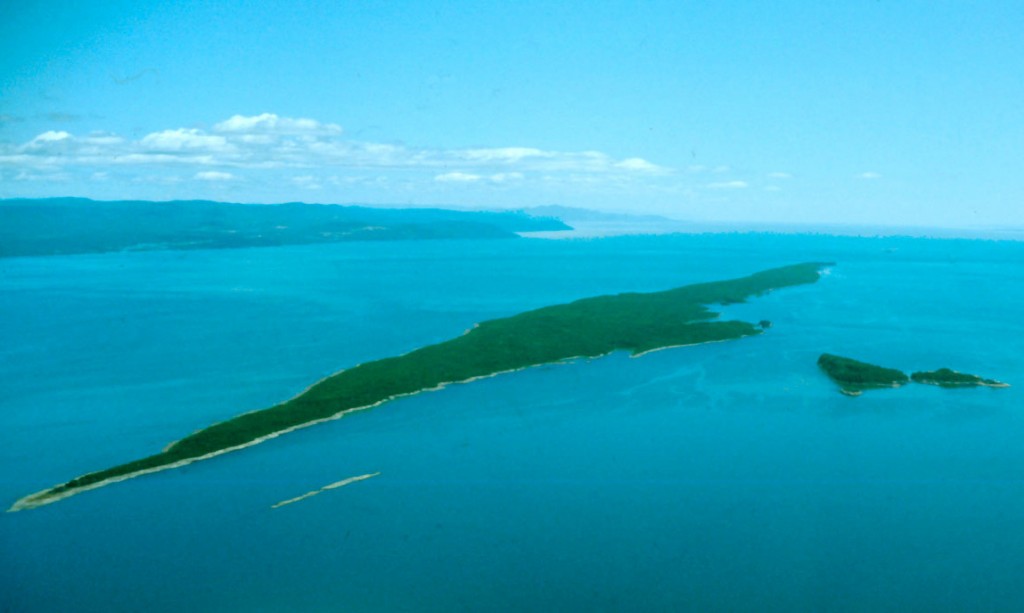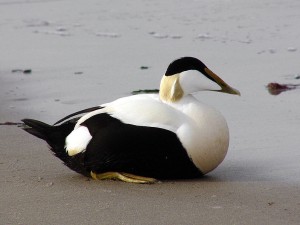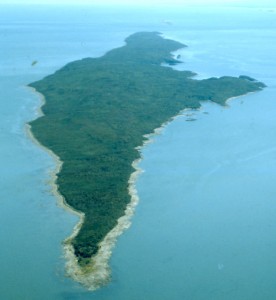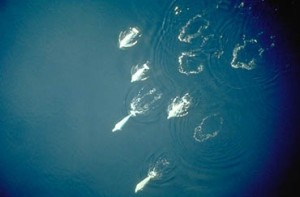Even within the many natural habitats of Canada, there are small pockets of surprisingly rich biodiversity. On Île aux Lièvres, or Hare Island, visitors can camp for the night amid an incredible sanctuary.
Île aux Lièvres may take its name from the luxuriously-coated snowshoe hare, but it’s the soft fluff of another species that has made this island truly unique. The Common Eider is North America’s largest duck – and has found a beloved home on Quebec’s Hare Island. Each May, after molting season, volunteers wander the island armed with large bags, collecting bits of down,discarded from tree branches, nests, and tall grasses. Renowned for its high quality as an insulator in duvets and parkas, eider down fetches a high price – and helps preserve the island for the ducks, and their many woodland friends.
Part of the Les Pèlerins (The Pilgrims) archipelago in the St. Lawrence River, the 13km-long Hare Island only passed into public hands in 1992, when it was sold by Farhad Vladi of Vladi Private Islands to the Société Duvetnor, a conservation group established by local biologists to protect the area’s islands. As of 2011, the non-profit had purchased an impressive eight islands near the mouth of the Gulf of St. Lawrence, only some of which, like Hare, are open to the public. On those where visitors are encouraged, the group has erected campsites and cottages, offers tours and transportation, and has pioneered a new standard of eco-tourism in Canada. The proceeds from these ventures help fund their protective efforts, together with donations from the public.
The largest of the Société’s acquisitions, and perhaps also the most visited, Hare Island is open from June 12th to September 19th each year – humans may roam the island only once the eider ducks have finished their nesting. Across the island’s expansive 2224 acres wind more than 40km of marked hiking trails; the westernmost tip of the island offers a stunning vantage point for admiring the pods of ivory-skinned Beluga whales that live in the St. Lawrence, whereas large harbour seals call the eastern edge home. And in between the poles? A proliferation of 30,000 eider ducks, countless snowshoe hares, gorgeous vistas, historic white lighthouses, and peaceful meadows and forests.
Since the entirety of this vast sanctuary could never be explored in a single day, the Société has set up four campsites, for a reasonable fee of $30 per night for a group of 4. These range from beachside sites near the dock, to camps buried deep within woodland paths, to a simple respite intended for the hardy traveller near the belugas at the remote western point. For those in search of something a little less rustic, a charming, yellow-boarded inn – Auberge du Lièvres – offers guests six rooms with private baths, delicious meals, and communal living rooms.
On Hare Island, however, the accommodations are dwarfed in importance by the unforgettable scenery, filled with all of the wildness that the eastern region of Quebec has to offer. Guests can stand, with the river’s cool spray in their hair, and look out onto the small nearby island of Brandy Pot with its picturesque bed-and-breakfast lighthouse; spot the belugas, minke whales, seals, and porpoises that drift in from the sea, and gaze out onto the misty blue hills of the Charlevoix mountain range. Canada may be full of spectacular natural wonders, but the efforts of its protectors has made Île aux Lièvres stand among them with pride.
Read about one writer’s sojourn on Hare Island: http://www.montrealgazette.com/news/todays-paper/Island+stay+offers+peaceful+beauty/4968171/story.html






